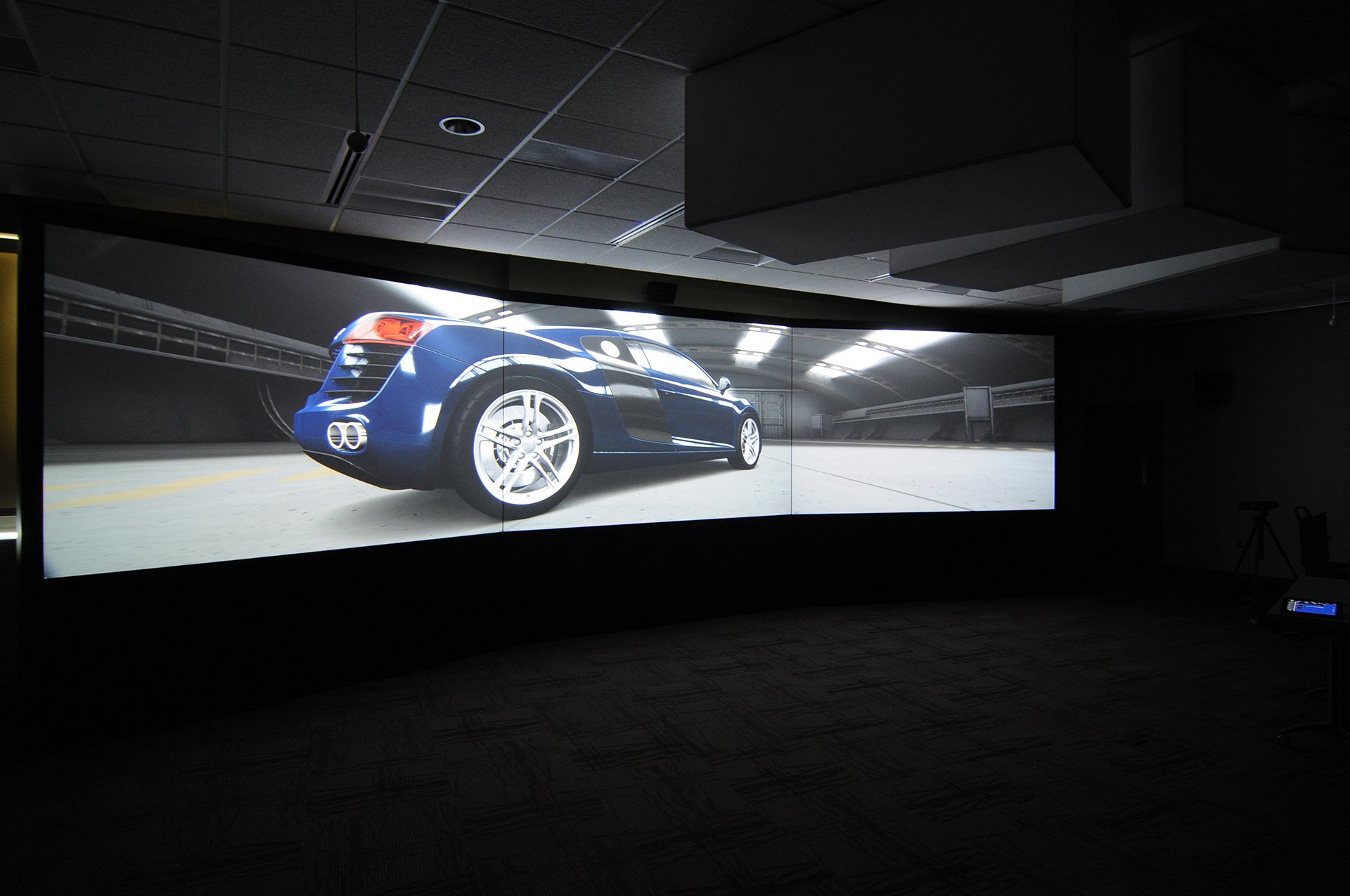

Real estate is among the most valuable commodities for corporate and military facilities, which makes maximizing that space especially important when considering an advanced visualization solution such as a PowerWall.
Because PowerWalls range in size from 18 feet and up, your organization should carefully consider the information you need to display and the space you have available. If your facility only has a limited amount of space, you may need to employ creative space saving techniques for your PowerWall system.
Determining exactly how much space your organization needs for a PowerWall projection system involves several key factors, including: physical space, the type of projection needed, screen size, and the distance to the projector.
Let’s take a step-by-step look at calculating how much space is needed to install a PowerWall system:
Calculating the space needed for a PowerWall system begins by considering the desired size of the PowerWall itself. This decision is typically driven by the type of information that will be displayed. For example, a full-scale vehicle rendering for an automotive company may require more real estate than a topographical map in a government project.
Another factor to consider is the desired aspect ratio of the displayed information. Aspect ratio is determined by the width and height of a display screen and influences resolution. When calculating screen size, choose a desired width and aspect ratio to properly determine height of the screen.
After selecting desired screen dimensions, performing a basic measurement of the throw distance of the projector will help determine the space needed in front of or behind the PowerWall system to optimize performance. Throw distance is equal to the width of the screen plus the distance of the projector. For example, a 20-foot-wide screen and 3-foot projector distance would require 23 feet of space to optimize performance.
Your organization may not have the luxury of a large space for a PowerWall system or may deal with unique room dimensions, but certain strategies exist to maximize space without severely compromising quality.
A creative way to maximize limited space is to employ “folding optics” or a “bouncing light path” solution. In this scenario, the projector is placed by the screen and aimed in another direction at an optical mirror, which then bounces the image back to the screen. Mainly used as a solution in rear projection systems, this strategy can significantly cut down the space required and preserve valuable real estate.
Another option is to create a blended image by placing multiple projectors behind the screen. While this solution might sacrifice quality, it can also solve issues created by tight spaces.
Implementing newer technology like direct LED systems can also minimize the space needed for installation and service. Depending on the desired image quality and budget, certain products like the Sony Canvas require a throw distance of only a couple feet for maintenance. Learn more about how to prepare your IT department for AV integration.
At IGI, we can help your organization realize its advanced visualization needs based on your unique space requirements. We perform comprehensive site surveys and custom design and engineering to optimize system performance.
IGI is an industry leader in the complete integration of ultra-high resolution Advanced Visualization systems, including PowerWalls, CAVEs and Virtual Reality. Request a consultation to learn more about how your company can realize the operational value of advanced visualization for your audiovisual display needs.